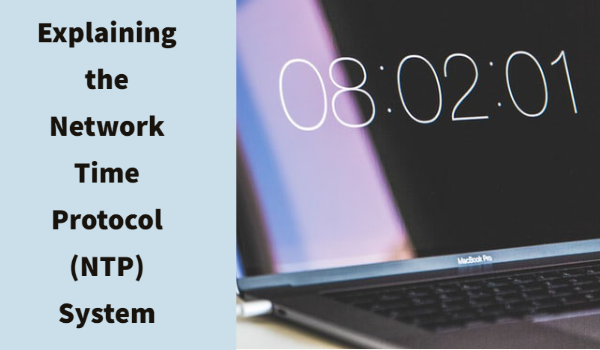Explaining the Network Time Protocol (NTP) System

The Importance of Time and Keeping It
Time is one of those fickle things that can only be measured, but never bought or sold. Once it is gone, like the sand grains through an hourglass, there is no reversing it no matter how persuasive the argument or passionate the emotion.
Of course, throughout history time has been relative to whatever culture it has been an important part of. Hunter-gatherer bands of primitive humans rose and fell by the sun and had little use for formal time, while French revolutionaries tried to make a 10-hour clock after the French Revolution to structure their days. It seems that the human control of time is illusory, and there is no better example than when the Soviet Union tried (and failed) to mandate five and six-day weeks during 1929-1931. While we cannot control or coerce time to do what we want, we certainly can measure it in increasingly accurate ways such as the NTP, which routes to a GPS NTP server and can be observed in a variety of ways.
The Accuracy of a GPS NTP Server
The Network Time Protocol (NTP) has been around since 1979 and the first commercial NTP clock got ticking around 1980, although it had an accuracy of only several hundred milliseconds. It vastly improved the synchronized clock systems available at the time and was widely recognized as a huge technological improvement. NTP generally works by connecting to a satellite orbiting around the Earth and broadcasting the signal to a GPS NTP server that can be interpreted by a variety of digital clocks, but are also used for synchronization by network devices like CCTV cameras, telephone systems, and digital video recorders. NTP is important for timekeeping so that systems run in an orderly predetermined manner. Scientists, engineers, and other technology-oriented people need this information in order to make calculations correctly for
The Hierarchy of NTP Servers
The NTP system uses a complex series of layers in order to reference time sources, assigning different hierarchies to each source based on its accuracy. They are, in order of importance, listed as “stratum” and ordered from 0-16. Stratum 0 is reserved for atomic clocks or radio clocks (extremely accurate), while Stratum 15 is generally considered the upper limit for any hope of synchronization or accuracy, and Stratum 16 is considered to be not synchronized and should not be used for time reference. It’s important to note that both GPS and NTP do not make any distinction for time zones or Daylight Saving’s Time, they simply sync up with what is called Coordinated Universal Time (UTC) from which other unique distinctions must be made in various local areas.
Why Are Satellites Used?
Some may wonder why GPS satellites are used in the NTP system rather than atomic clocks on Earth. The truth is that all satellites have atomic clocks in them that sync up with a base atomic clock on Earth so that they all try to keep the same time. Inevitably the rotation of the Earth and the movement of the satellites does not match up (for a difference of approximately 16 seconds between UTC time and GPS time), but this is built into the offset timekeeping devices to maintain high accuracy. Because satellites can be accessed anywhere in the world, and adjusted for slight inaccuracy, they are the dominant providers of time in the NTP system.
With Every Pro, There’s a Con
While a GPS NTP server is generally very accurate, it is still under the whims of the GPS system. Since the GPS system is technically a US Military project with all 24 satellites under the control of a single government, many organizations opt not to use it because it is not truly “open source.” Some even think that since it is controlled by a foreign power that it is open to manipulation. While this has never been proven true, and science continues to observe the accuracy of the GPS-oriented NTP system, it appears to be nothing to worry about. Still, this is a partial reason as to why the Precision Time Protocol was eventually developed in 2002 and continues to be improved technologically beyond the NTP system to the tune of microseconds, not milliseconds.
